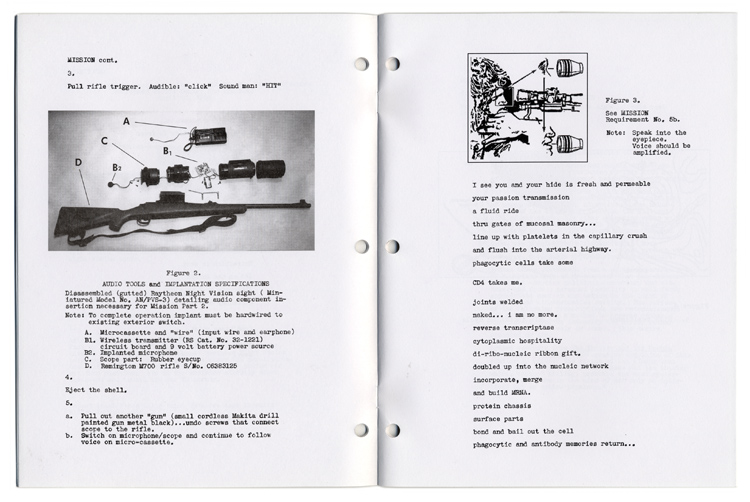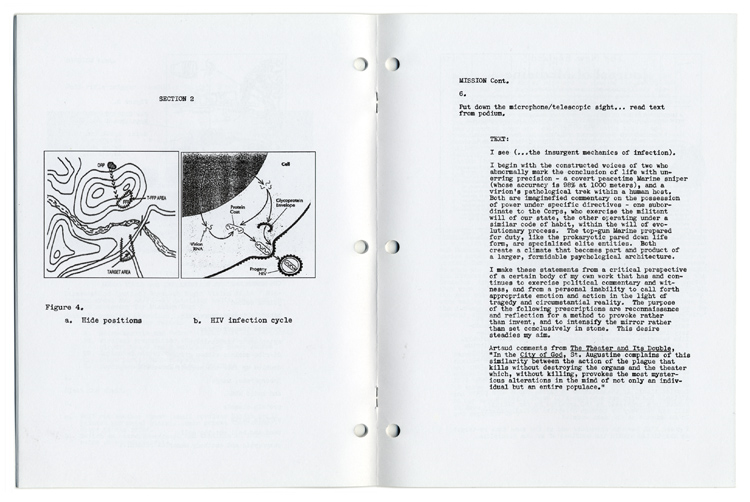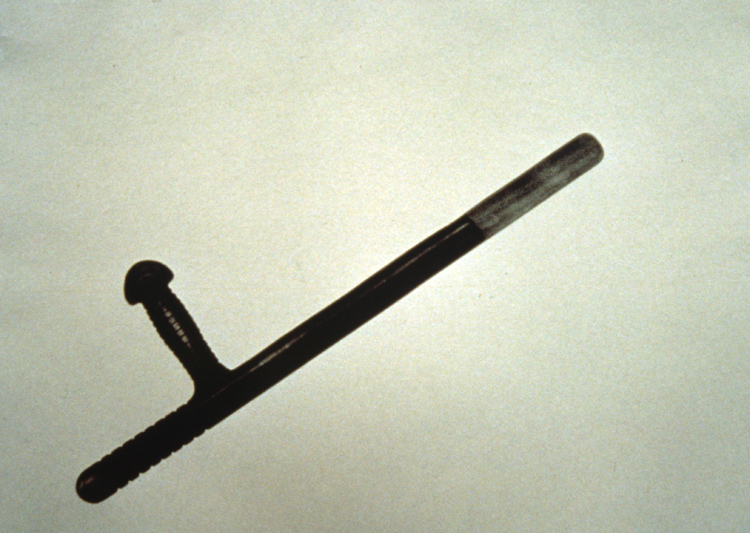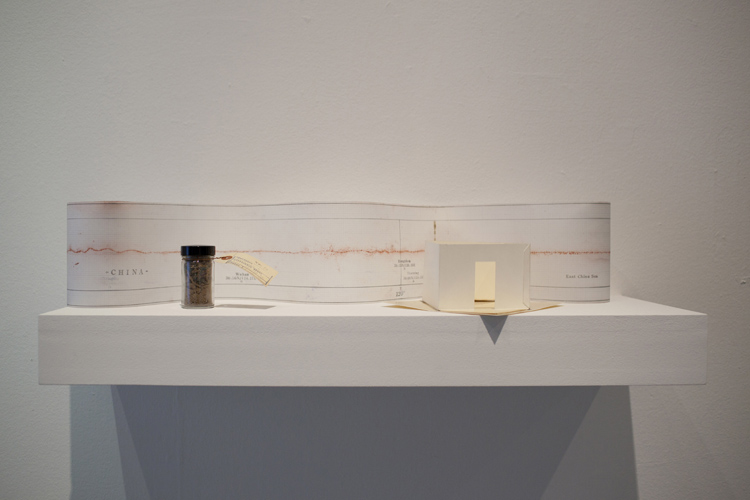
1994
gun-blued steel, aluminum, motor and electric wiring, wood, glass, surgical silk, plastic
box: 22 3/4 x 22 1/4 x 6 1/4 inches
Spin Control is a work about the tenuous stability of inner city race relations. Riots most often occur during the sweltering heat of summer and in neighborhoods where the average resident can only sit close to a window fan to escape the heat. In this installation, the fan is severed along the lines of the city plans of neighborhoods in Detroit, MI, Miami, FL, (Crown Heights) Brooklyn, NY and (South Central) Los Angeles, CA–all sites of major race riots. The blades have been sutured back together, like a wound, creating the appearance of cohesion. Should the heat rise and the fan be plugged in; however, the object could spin out of control and explode into razor sharp shrapnel, revealing the inherent menace of this monstrous, beaten icon. Spin Control is loaded with references to the battered condition of urban neighborhoods, the broken spirit of weary inhabitants, and the lack of fiscal attention to the special needs of our cities.






















